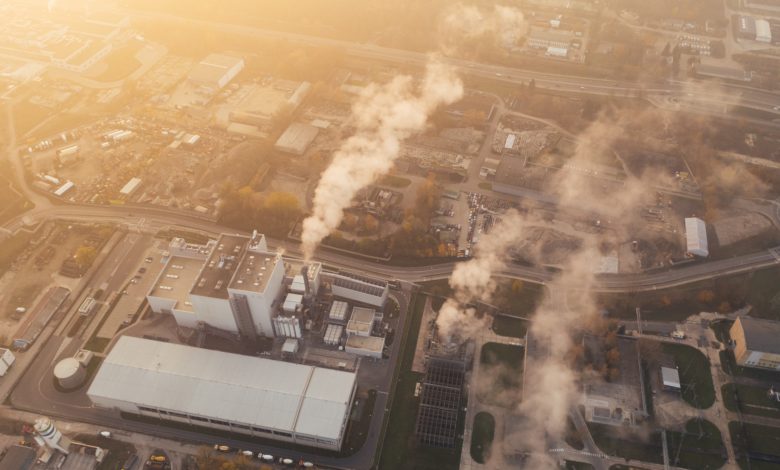
Do you know what is Climate change?
Climate change is the name for changes in the global temperature of the earth as a result of the greenhouse effect. It’s been caused because of the large amounts of gas humans have released into the atmosphere.
Climate change is the gradual increase in the Earth’s average surface temperature. The Earth’s average surface temperature has increased by about 1.5 degrees Fahrenheit since the late 19th century, and is estimated to have increased by about 2 degrees Fahrenheit since the turn of the 21st century. The most significant cause of climate change is the burning of fossil fuels, primarily oil and coal, which releases greenhouse gases into the atmosphere. These gases trap energy from the sun in the atmosphere, causing the Earth’s surface temperature to increase.
It has become a global problem. The United States is one of the largest contributors to climate change, but it is not the only country.
China, India, and Russia are the world’s top five biggest contributors to climate change, according to a report from the United Nations Environment Programme (UNEP).
The report says that the world’s top five contributors – the US, China, India, Russia, and the European Union – account for more than two-thirds of the emissions that are driving climate change.
The US, China, and India are responsible for the lion’s share of emissions growth between 1990 and 2014, the report says.
There are three primary factors that contribute to climate change:
- Emissions from human activities (such as burning fossil fuels)
- Natural variability (such as the sun’s variability)
- Earth’s climate feedback.
Let’s talk about them in detail.
1. Emissions from human activities
There are many different types of emissions that come from human activities. The most common and well-known type of emission is the release of greenhouse gases into the atmosphere. These gases include carbon dioxide, water vapour, methane, and nitrous oxide. Greenhouse gases trap heat in the atmosphere and cause the Earth’s temperature to rise. This can lead to climate change, which can cause drastic changes in weather patterns, sea levels, and ecosystems. Other types of emissions include particulate matter, such as soot, and harmful chemicals, such as mercury and lead. These emissions can cause respiratory and other health problems in humans and animals.
Reducing emissions from human activities is essential to protecting the environment and mitigating the effects of climate change. There are many ways to reduce emissions, such as using renewable energy sources, improving energy efficiency, and reducing consumption. Individuals can also reduce their emissions by recycling, composting, and driving less.
2. Natural Variability
Natural variability is the year-to-year or decade-to-decade variability in the Earth’s climate that has always existed. It includes changes in the intensity of the sun, volcanic eruptions, and variations in the Earth’s orbit around the sun. These factors can cause warming or cooling periods lasting a few years to a few decades. Natural variability can also affect the rate of melting of polar ice caps and the release of greenhouse gases from the ocean floor.
Climate change is the long-term alteration of temperature and typical weather patterns in a place. Climate change could refer to a particular location or the planet as a whole. Climate change has been connected with damaging weather events such as more frequent and more intense hurricanes, floods, downpours, and winter storms. Together with expanding ocean waters due to rising temperatures melting polar ice, the resulting rise in sea level has begun to damage coastlines as a result of increased flooding and erosion.
3. Earth’s climate feedback.
Earth’s climate feedback loop is a term used to describe the various ways in which the Earth’s climate system responds to changes in the atmosphere and land surface. These changes in turn can affect the climate system in a number of ways, including altering the Earth’s temperature, precipitation, winds, and ocean currents.
The Earth’s climate system is composed of a large number of interacting parts, and it is difficult to determine exactly how each one affects the others. However, research has shown that the Earth’s climate feedback loop is a powerful mechanism that can significantly impact global temperature.
One of the key components of the Earth’s climate feedback loop is the water cycle
Emissions from human activities are the largest contributor to climate change. We produce greenhouse gases when we burn fossil fuels, which trap energy in the Earth’s atmosphere. The more greenhouse gases we produce, the more heat.
Greenhouse gas emissions i.e, carbon dioxide and methane are caused by burning gas for heating or driving a car or coal or wood fire for heating. The main sources of carbon dioxide emissions are fossil fuels that cause air pollution, like coal, gas, oil and natural gas. The main sources of carbon dioxide emissions are buildings, industry, landfills and land use. By making these changes, we can reduce the amount of greenhouse gas emissions.
The factors of climate change are the amount of carbon dioxide in the atmosphere, the concentration of water vapour, the amount of heat received from the sun, and the amount of dust in the atmosphere. All of these factors work together to create climate change.
Things we can do to prevent climate change and its devastating effects. Here are some key things to remember:
Reduce greenhouse gas emissions: One of the most important things we can do to prevent climate change is to reduce our emissions of greenhouse gases. This can be done by using less energy, choosing energy-efficient appliances, and switching to clean energy sources like solar and wind power.
Protect and restore forests: Trees play a vital role in absorbing carbon dioxide from the atmosphere and helping to regulate the climate. So, it’s important to protect our forests and restore degraded forests. This can be done by planting trees, supporting responsible forestry practices, and reducing our consumption of wood products.
Improve agricultural practices: Agriculture is a major source of greenhouse gas emissions. But, there are many ways to make agriculture more sustainable and reduce its impact on the climate. This includes using more efficient irrigation methods, planting trees and cover crops, and reducing food waste.
There are many ways to prevent global warming, but one of the most important is to reduce your carbon footprint. By reducing the amount of carbon you emit, you can help make a difference.
Here are some ways to reduce your carbon footprint:
1. Use public transportation or carpool when possible.
2. Walk or ride your bike instead of driving whenever possible.
3. Reduce your energy consumption by turning off lights and appliances when you’re not using them.
4. Consider investing in renewable energy sources like solar or wind power.
5. Recycle and compost to reduce the amount of waste you produce.
By making small changes in your daily life, you can make a big difference in the fight against global warming.




